A melting pot of Asian and European influences, Vietnam’s architecture reflects its rich history and rich heritage. To grasp all the aspects, it is necessary to decompose its history several times millennia in stages characteristic of a lifestyle and a vision of oneself and the world.
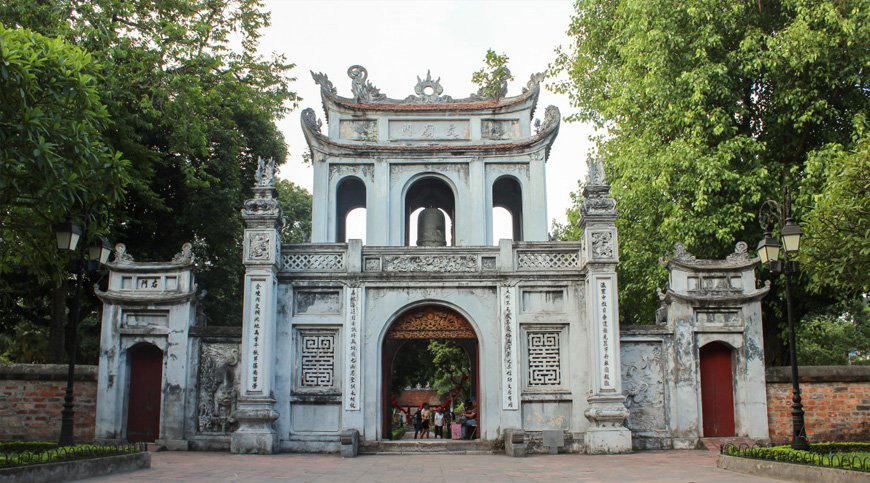
Ancient architecture in Vietnam - Picture : Internet
A short introduction to the architecture of Vietnam
For the visitor who comes to Vietnam for the first time, one of the characteristics of the country that he will notice first is its architecture. An important part of the local culture, it is characterized by its Chinese and Western influences – in particular French – but from which emerge typical Vietnamese traits. Thus, despite the vagaries of History, the old quarter of Hanoi, the houses on ethnic stilts, a wide variety of temples and pagodas, community houses and historic villages of the shapped-S country testify with elegance of the architecture of Vietnam.
Belonging to the Indochinese peninsula, Vietnam stretches in length, characterized by a great diversity of topography and landscapes, all under a very contrasted weather. The architecture of Vietnam thus adapts to the mountainous reliefs of Tonkin (North Vietnam), the alluvial plains of the Red River Delta, the Central Highlands or the flooded jungles of the Mekong Delta, in the South. At the same time, architectural design has also evolved into a socio-economic dynamic, making use of local materials such as bamboo, wood, leaves and stone as well as more “noble” materials, especially for palaces, such as brick, ceramics or earthenware.
Known as Kiến trúc Việt Nam, Vietnamese architecture is defined by its decorative styles throughout history, as well as its flexibility in incorporating external influences, whether regional or foreign. Like any other country or culture, Vietnam’s architecture is not only the whole physical environment in which people live, it is also a valuable testimony to how we perceive the world and how we fit into it.
.jpg)
Traditional stilt house - Picture : Pixabay
The characteristics of Vietnamese architecture
Vietnamese architecture is so impressive and diverse that it has been broken down into four historical periods: ancient, colonial, modern and contemporary. Traditional architecture has the following characteristics:
Regionalist: From north to south, from antiquity to the present day, each region has its own aesthetic both in terms of structure and appearance.
Simplicity: Apart from the royal structures, the architectural style of the Vietnamese people remains simple and modest, with sober but elegant ornamental motifs and simple colors.
Respect for nature: In deep cohesion with its natural environment, Vietnamese architecture is linked to mountains, winds, rain and rivers. Many buildings follow the rules of Feng Shui (which here takes the name of Phong Thuy), in a very Asian spirit of universal harmony.
Harmony: In the wake of the previous point, the traditional architecture of Vietnam is marked by harmony and balance, in an ideal of beauty that wants to be sustainable.
Use of local materials: All traditional architecture in Vietnam uses locally accessible materials in a sustainable and ecological vision of the place of life.
VIETNAM’S ARCHITECTURAL HERITAGE IN FOUR PERIODS
The ancient architecture of Vietnam
Each historical era has seen a distinct evolution of Vietnam’s architecture. It is customary to date the birth of Vietnamese architecture during the dynasty of the Hung kings, a dynasty that is both mythological and firmly rooted in time. For example, nearly 4,000 years ago, we used to protect form wild animals by living in wooden houses on stilts, the roof of which very often had the silhouette of a turtle or that of an inverted sampan. The ancient period saw the development of structures such as temples, pagodas and communal houses decorated with intricate sculptures and richly worked decorations.
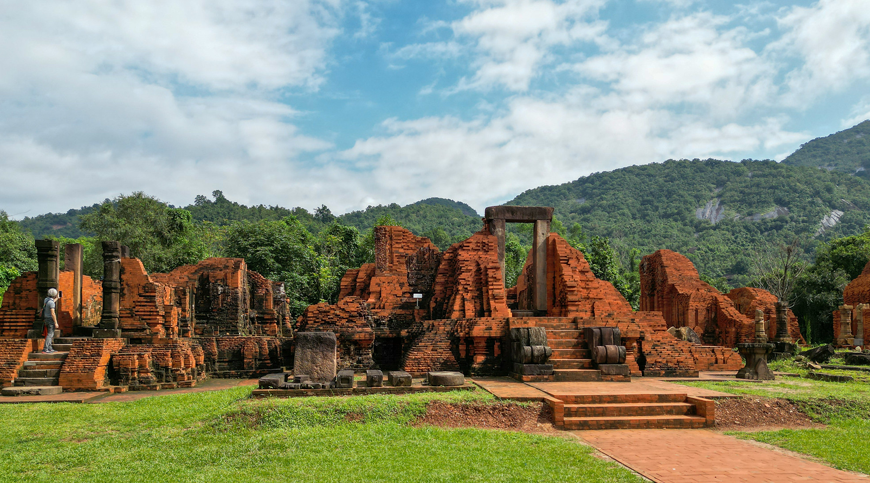
My Son sanctuary - Picture : Mr Linh's Adventures
The legacy of the Cham
Built from the 7th by sailors from India, the Cham civilization will radiate until the 19th, especially in what is today a part of central and southern Vietnam. Spectacular in the finesse of their elaboration and exceptional by their endurance in time, Cham vestiges can still be discovered and visited today. The sanctuary of
My Son, near
Hoi An is the most remarkable example (two sites also listed as UNESCO Heritage), followed by the Po Nagar towers in Nha Trang.
Note: If you have the opportunity, do not hesitate to visit the Cham Sculpture Museum in Da Nang. You will discover the fascinating splendor of this now extinct civilization.
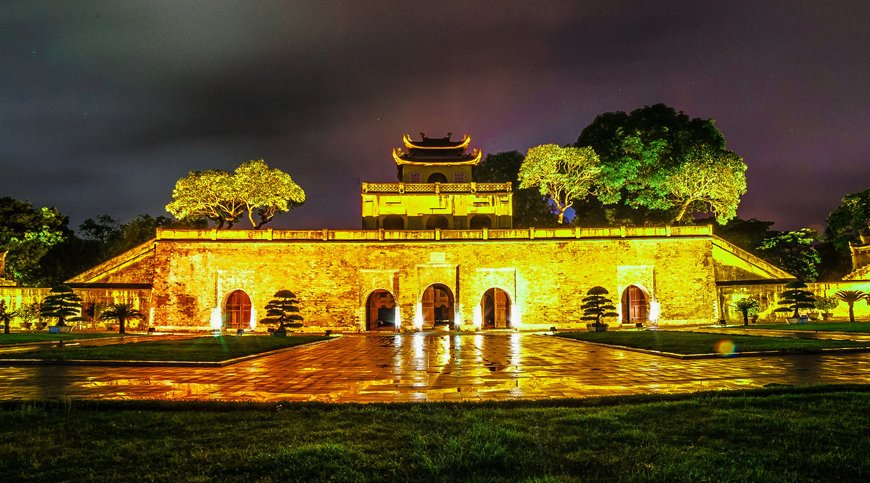
Hanoi's Thang Long Citadel - Picture : Mr Linh's Adventures
Vietnamese architecture at the time of dynasties
Vietnamese architecture under the Ly dynasty
During the 10th century, Vietnam is a cluster of a dozen kingdoms with belligerent intentions and monarchs wanting to fight. It is one of those overthrows of the kingdom that was once at the origin of the creation of Dai Co Viet, the first united and imperial kingdom of Vietnam. It had Hoa Lu as capital, today in the province of Ninh Binh. The site is always visited with pleasure, discovering temples and pagodas with distinctive style, in a breathtaking and serene natural setting of karst cliffs.
Founded in the 11th century, the Ly dynasty left its lasting mark on the
architecture of Vietnam. Carried by the Buddhism of which it is the ambassador, the architecture under the Ly is recognized by its sophisticated residential complexes with typical ornamental roofs and dragon-shaped railings. 950 pagodas were built throughout the reign of King Ly Thai Tong and one of the most typical examples of this period is the citadel of Thang Long (former name of Hanoi), in the millennial city – now a
UNESCO World Heritage Site.
Architecture of Vietnam under the Tran dynasty
In the 13th century, pagodas, houses, temples and fortress are among the most representative constructions of architecture under the Tran dynasty. The Binh Son Tower in Vinh Phuc Province, the Pho Minh Tower in Nam Dinh Province and the Thai Lac Pagoda (Hung Yen Province) provide a good overview of the architecture of the time and years to come. In this regard, the complex and structure of Pho Minh Temple is a typical example of Tran aesthetics: a structure in three main sections - the entrance hall, the main hall and the place of worship – where the inner garden and courtyard play an important role in conveying a certain vision of the Universe. Hang Mua but also the Bich Dong Pagoda, in the Halong Bay Terrestrial are also beautiful jewels of this period considered the Golden Age of arts, culture and science in Vietnam. Moreover, although this first university of Vietnam was built in 1070, the Temple of Literature has been restored and renovated under the Tran.
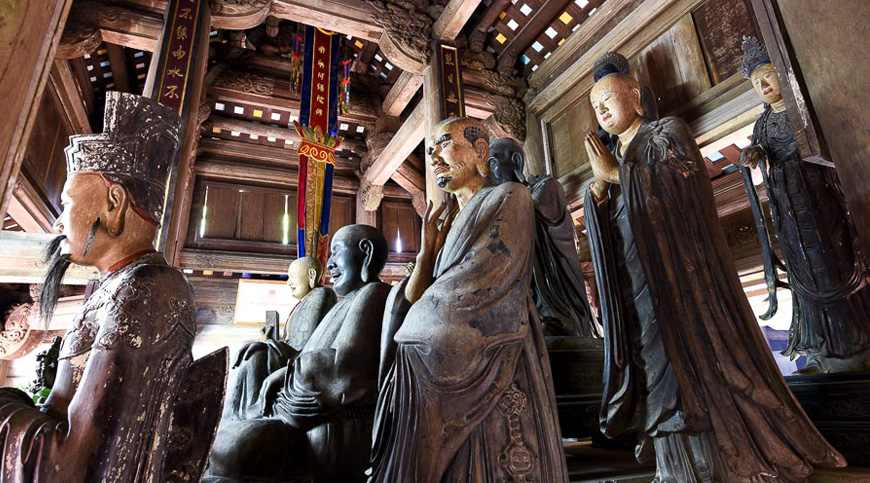
Tay Phuang Pagoda - Picture : Internet
The architectural heritage of the Le dynasty
Our time capsule makes a leap to the 16th and 17th centuries, where the architectural style of the Le is particularly visible in the royal palace and mausoleums as well as in religious architecture.
Besides the remarkable temple of But Thap and its popular and religious art, in the province of Bac Ninh, two pearls of Vietnamese architecture of that time are the Tay Phuong Pagoda and the Dinh Bang communal house.
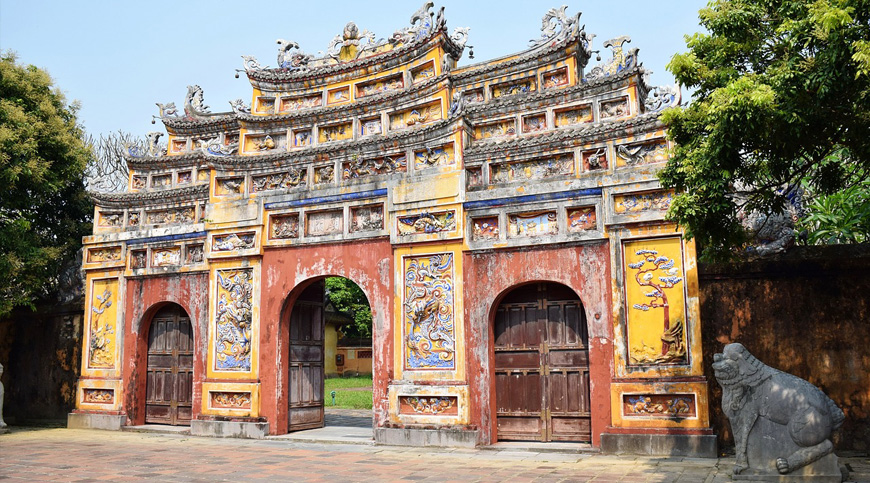
Architecture in Hue - Picture : Pixabay
Architecture according to the Nguyen dynasty
Under the Nguyen dynasty, the
city of Hue became the capital of the country, leaving the North a little behind. Although the period still sees the construction of Khue Van Cac (Literature Constellation Pavilion), Ngoc Son Temple and other buildings in the heart of Thang Long. The Nguyen’s vision is unique: to develop a complex of gardens and houses. From citadels to palaces, mausoleums to garden houses, the architecture under the Nguyen radically contrasts with the tube houses of Hanoi!
Colonial architecture in Vietnam
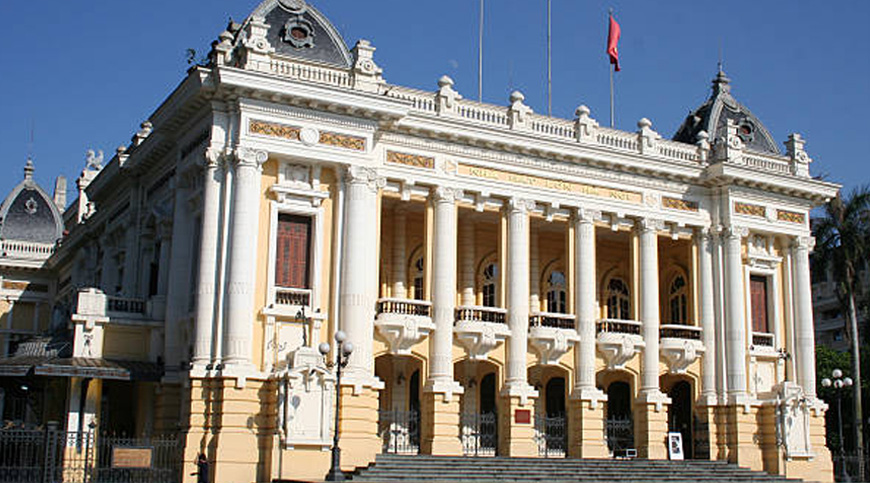
Hanoi Opera House - Picture : iStock
Just lift your nose during a walk in the old quarter of Hanoi to take the measure of the footprint left by the French during 100 years of colonialism. From the Opera of Hanoi to Saigon, from St Joseph’s Cathedral to Notre-Dame of Saigon, from the stone church of Sapa to the old buildings nestled in the jungle of the Mekong Delta via romantic Hoi An ancient town (UNESCO listed), the buildings erected under the French testify to a new trend in architecture. The European style has had to adapt to the weather and climatic constraints, creating a new style that is easy to appreciate by strolling through the capital along the beautiful avenues lined with trees. While many old French houses have fallen into ruins, others have been given a new life as upscale hotels or restaurants with French accents.
Contemporary Vietnamese architecture
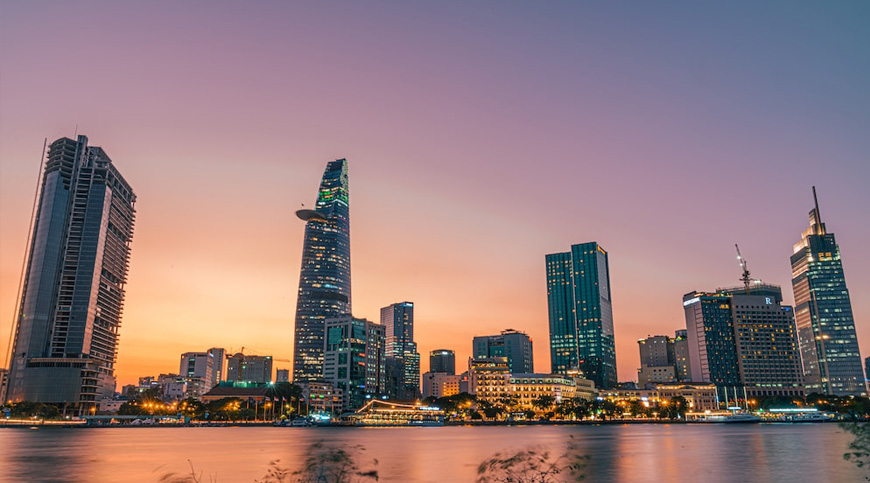
Saigon Skyline - Picture : Unsplash
Over the past three decades, since the United States lifted the embargo, the economy has improved dramatically, boosted by Doi Moi (Renewal). This period sees in particular the chaotic and more or less happy flowering of a brutalist architecture (Ho Chi Minh Mausoleum, Ha Noi and Reunification Palace, Saigon) and modern constructions ans bridges that tends to copy the West. However, in Ho Chi Minh City in particular, several remarkable buildings were designed by Vietnamese architects in the modern style such as the Reunification Palace and the University of Architecture. Skyscrapers, however, including the iconic Bitexco Financial Tower or Landmark 81 were designed by foreign companies, which is why their architecture is more easily identifiable as modern international structures; with glass, steel and concrete as the dominant materials.
From old stones to concrete, yin-yang tiles to trendy roof-tops, the architecture of Vietnam draws the contours of a fascinating country, with a unique cultural heritage. The old meets the modern, the local and the foreign come together in an eclectic mix, creating unforgettable urban spaces that the architecture lover you are or just simple curious will not fail to admire during a future stay in the Land of the two Deltas!